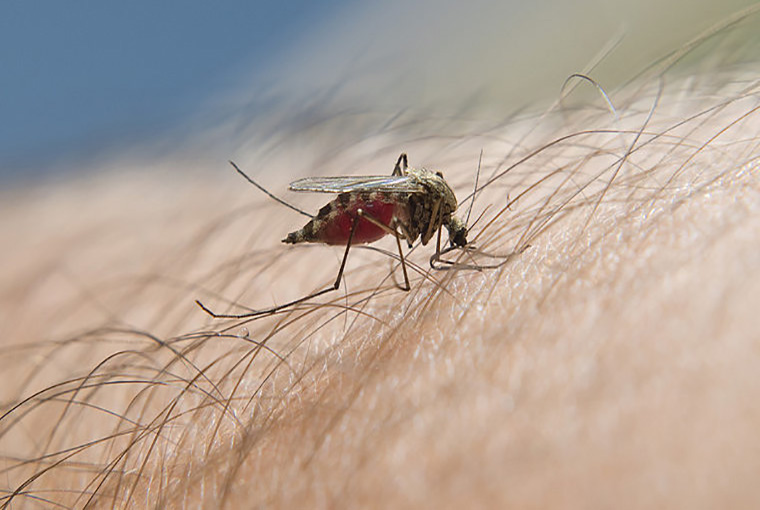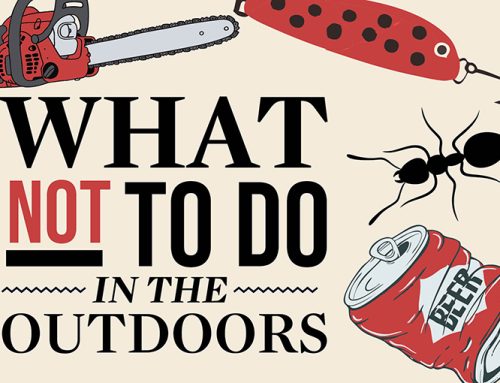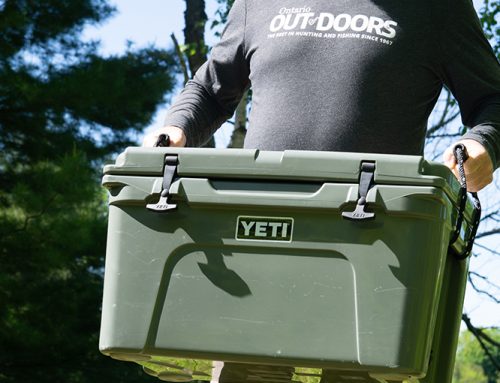
Whether they be mosquitoes, blackflies, or sandflies, nothing takes the fun out of an outdoor adventure faster than a swarm of blood-thirsty biters. But, there’s no need to pack up and scurry home. There are numerous insect repellents on the market, but an alternative is to make your own, as we did when I was a kid. This was out of necessity, since store-bought repellents were too expensive and hard to come by in our rural woods. I still use natural bug dopes made from cooking oils and fats, plant-based essential oils, citrus peels, herbs, wild plants, and common household ingredients. They’re inexpensive and safe to use.
Fighting Back
To make a simple, effective dope, you need two main ingredients. One is a repelling agent, such as an essential oil noted for deterring bugs. The most popular is citronella, sold commercially since the 1940s as a registered plant-based insect repellent with little or no toxicity, making it a number-one pick for homemade preparations. You can buy it at sporting goods, department stores, or garden centres.
Other noted bugrepelling essential oils are eucalyptus, rosemary, thyme, basil, catnip, orange, cinnamon, lemon grass, cedar, pine, pennyroyal, tea, lavender, cloves, wintergreen, and mint. These can be found in health-food stores.
Pinpointing which essential oils work best for which type of bugs and on whom is tricky, since everyone has different body chemistry. A dope that works great on one person might not work on another. So, experiment by making small batches to sample using various essential oils or mixtures, keeping notes so you can recreate a winner.
The Messenger
The second ingredient is called a carrier. Since essential oils don’t mix with water, a carrier must be used, not only to dilute the pungent oil to desired strength, but also to make the dope easy to spread or spray uniformly over skin and clothing.
Safe carrier oils to choose from when making oil-based dopes are olive, sunflower, vegetable, other cooking oils, and low or non-scented skin oils such as baby oil. Aboriginals used fish oil and rendered-down bear fat as a carrier. Vaseline, lard, or shortening can be used in place of oil, making a thicker, more waterproof formula. Rubbing alcohol, witch hazel, and vinegar are used as carriers when making bug sprays.
Small empty plastic containers from around the house can be recycled to hold the dope, or you can buy inexpensive spray-and-squirt bottles. Label your preparations. Apply homemade dopes as you would commercial ones, avoiding contact with eyes and reapplying as needed. Keep out of reach of children.
Since some essential oils, such as citronella (my top pick for all types of bugs) and eucalyptus (good for blackflies and sandflies), are more pungent than others, such as orange and mint, add them by droplets to the carrier until desired strength and a strong odour is reached, keeping in mind there’s no need to overkill by adding more repelling oil than necessary. A general rule of thumb is 5 to 10 drops of essential oil to 1/4 cup of carrier.
Recipes
A Simple Solution
Mix 1/4 cup of olive or other carrier (for oil-based dope) or 1/4 cup of Vaseline, shortening, or lard (for grease-based dope) with 5 drops of citronella oil (or 5 to 10 drops of other essential oil) and mix well. Transfer to plastic squirt bottle. Instead of using the full measure of one type of essential oil, try mixing oils to create personal blends.
No-see-ums Nemesis
Nothing deters sandflies better than Dad’s concoction, the “magic” ingredient being castor oil. Mix 2 tablespoons vegetable oil with 2 tablespoons castor oil and add 4 drops of citronella oil, 3 drops each of wintergreen oil and oil of cloves. Blend well, transfer to squirt bottle.
All-purpose Cream
The beeswax in Grandma’s old formula makes a waterproof dope that lasts a long time. Dissolve 2 tablespoons borax in 1/4 cup boiling water in a small bowl. In a tin can set in boiling water, melt 5 tablespoons beeswax. Grandma got hers from a local beekeeper, but you can buy it at hobby shops. Remove from heat. Add 5 tablespoons lard to the melted wax, blend in the borax solution. Add 1 teaspoonful each of citronella and eucalyptus oil, stirring until thick and smooth. Transfer cream to lidded jar.
Herbal Sprays
These gentler solutions Mom used don’t last as long as others, but can be reapplied as needed and are safe for children and those with sensitive skin. Brew a couple cups of strong herbal tea, using any insect-repelling fresh or dried herbs or a mixture of herbs. Bush teas made from evergreen boughs, pineapple weed, stinging nettle, yarrow, wild ginger, juniper berries, or other pungentsmelling plants can be used in camp. Steep until cold, strain into a spray bottle, and add equal amounts of apple cider or other vinegar, rubbing alcohol, witch hazel, or vodka to the tea and shake well. Spray as needed. These cooling sprays keep bugs off and bring soothing relief to bug-bitten skin.
Other Tips for Keeping Bugs at Bay
Clothing
Bugs use vision to spot prey, so wear light instead of dark clothing and choose materials they can’t bite through. You can buy bug-proof shirts and pants. The next best thing is to wear a long, tight-sleeved turtleneck, extra-long pants with elastic bottoms over high socks (so when you bend over your ankles won’t be exposed), high boots, and a snug-fitting netted hat. Fresh pungent herbs and wild plants can be crushed and rubbed on skin and clothing to deter bugs, and planting them around the yard helps control them.
Citronella Bug Band
Cut strips of flannelette long enough to tie around hat, waist, arms, and ankles. Saturate the bands with citronella, eucalyptus, or other essential oil and wear to keep bugs away. Good for those who can’t apply dope directly to sensitive skin.
Rosemary Hair Rinse
Mix a few drops of rosemary oil (noted for being good for the hair) with water and rinse or comb through hair to keep bugs, especially sandflies, away from head. Your body heat will keep the odour activated all day.
Onions, Garlic, and Leeks
Eating these pungent bulbs gives you killer bug breath and repulsive sweat. Another trick is to rub raw onion, mashed garlic, or a paste made from garlic or onion powder mixed with water over skin to deter bugs. In an emergency, bruised wild leek leaves and mashed bulbs can be used. Make a spray by mixing one part onion or garlic powder with three parts water. Mist around tent and outdoor space.
Citrus Peels
They’re loaded with repelling essential oils. Rub peels over skin and fill breast pockets before heading outdoors. Your body heat will activate the odour. Or string citrus peels into a necklace and wear to fend off bugs. The peels lose potency after a few days, but can be refreshed by dropping essential orange or other oil on the undersides to reactive them.
Smoke
Tossing nettle, burdock, or rhubarb leaves on a smouldering campfire produces “green” smoke that drives bugs away. When I was a kid, Grandpa would treat his old jacket and hat to a quick stint in the backyard smoker, claiming there wasn’t a bug in the bush that would come anywhere near him.
Pitching Camp
Choose an open, breezy spot with low grass on high ground away from water. Mosquitoes and blackflies hide in tall grasses and dark bushes when temperatures are hot during the day, but when the weather cools in the evening, they come out with a vengeance. So, steer clear of their hideouts.
Mothballs
Fill the toes of several pairs of socks with mothballs and hang them around your camp. Tuck some into your coat pocket or store outdoor clothes with them to permeate with repelling odour. Warn kids that mothballs are not candy.






Leave A Comment